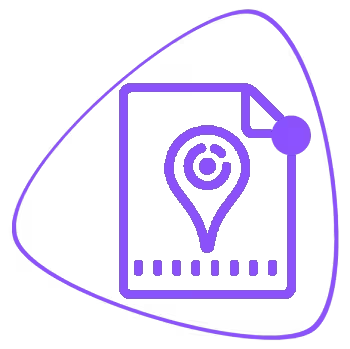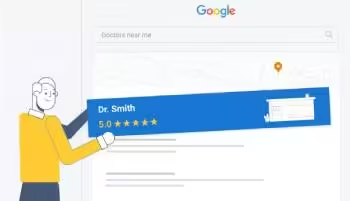For businesses looking to improve their visibility in local search results, Google My Business (GMB) has become an essential tool.
Whether you’re a bakery, a dental clinic, or a service provider, optimizing your Google My Business profile can significantly impact your online presence and, more importantly, attract potential customers near you.
We’ll cover everything you need to know about optimizing your Google My Business listing to rank higher in local searches in this guide.
Why Google My Business Is Important for Local SEO
For local search, Google My Business is extremely important. Here are a few reasons why you should use it:
- Increased Visibility: If a person searches for a service “near me” or in a specific location, Google prioritizes businesses with verified GMB listings in the local pack (the map section featuring the top search results).
- Trust & Credibility: The Google My Business profile gives your business credibility. People trust reviews, business hours, and location information verified by Google.
- Mobile-First Searches: Increasingly, people are searching for local businesses on their smartphones. GMB helps your business rank in mobile search, making it visible to customers on the move.
- Google Maps Integration: Customers can easily find your exact location with Google Maps linked to your business information.
Let’s take a look at how you can optimize your GMB profile now that we’ve established its importance for local SEO.
1. Claim and Verify Your Google My Business Listing
Your Google My Business profile needs to be claimed and verified before you can optimize it. If your business is already listed on Google, claiming the profile will give you control over what information appears.
Steps to claim your listing:
- Go to Google My Business and sign in with your Google account.
- Search for your business by name to see if it’s already listed.
- If it appears, click on it and choose the option to claim it. Google will require you to verify your association with the business.
Verification Methods:
- Postcard: Google sends a postcard with a verification code to your business address.
- Phone: In some cases, businesses can verify via phone call or SMS.
- Email: For some businesses, Google may offer verification via email.
- Instant Verification: If you’ve already verified your website with Google Search Console, you may be eligible for instant verification.
Verifying your listing gives you the opportunity to start optimizing your profile.
2. Complete Every Section of Your Google My Business Profile
Google My Business profiles that contain all the required information rank higher in local search results. Here’s how to make sure each section is filled out correctly:
Business Name
- Consistency: Make sure your official business name appears on all your online platforms (e.g., website, social media, directory listings).
- No Keyword Stuffing: Resist the temptation to add keywords like “Best Pizza in New York” to your business name. Google’s policies discourage this, and it could lead to penalties.
Address
- Make sure your address is accurate and consistent with what’s listed on your website and other online directories.
- If you don’t have a physical storefront (e.g., service-area businesses), Google allows you to hide your address and list the areas you serve.
Business Categories
- Choose the most relevant primary category for your business.
- Select additional secondary categories if applicable. For instance, a restaurant might select “Pizza Restaurant” as the primary category and “Italian Restaurant” as a secondary category.
Phone Number
- Use a local phone number with an area code that matches your location. Avoid toll-free numbers, as local area codes can help improve local search rankings.
Hours of Operation
- Be accurate and update your hours regularly, especially during holidays or special events. Inaccurate hours can lead to negative customer experiences, hurting your reputation and rankings.
Website URL
- Add your website URL. If you have specific landing pages for locations, link to the most relevant page instead of just the homepage.
Business Description
- Write a concise, compelling business description that includes your unique value proposition and relevant keywords (naturally integrated).
- You have 750 characters but focus on the first 250 as that’s what users see without expanding.
Attributes
- Add relevant attributes such as “Wheelchair Accessible,” “Free Wi-Fi,” or “Outdoor Seating.” Attributes enhance the user experience and may contribute to search ranking improvements.
3. Upload High-Quality Photos and Videos
There is no doubt that visual content plays a significant role in attracting customers and building trust. According to Google, businesses with photos receive 42% more requests for directions and 35% more click-throughs to their websites.
Types of Photos to Upload:
- Exterior Photos: Showcase what your business looks like from the outside so customers can recognize it.
- Interior Photos: Give people a glimpse inside your business. Highlight the atmosphere, décor, and layout.
- Product Photos: If applicable, upload images of your products, food, or services.
- Team Photos: Humanize your business by showing your staff interacting with customers or working behind the scenes.
Tips for Visual Content:
- Quality Matters: Ensure your photos and videos are well-lit and high-resolution.
- Upload Regularly: Fresh content signals to Google that your business is active. Consider uploading new photos every month.
4. Gather and Manage Customer Reviews
Review scores are one of the most important ranking factors for local SEO. Positive reviews improve your local search ranking and boost customer trust.
How to Encourage Reviews:
- Ask satisfied customers to leave a review, either in person, via email, or with a link sent through SMS.
- Include a Google review link in your email signature or on your website.
- Use in-store signage that encourages reviews (e.g., “Love our service? Leave us a review on Google!”).
Respond to Reviews:
- Timely Responses: Respond promptly to both positive and negative reviews. Google values businesses that interact with their customers.
- Thank Positive Reviewers: Show appreciation to customers who leave positive feedback. This strengthens relationships and encourages future reviews.
- Handle Negative Reviews Gracefully: Address concerns professionally, offering solutions when appropriate. This demonstrates good customer service, which can help mitigate the impact of negative reviews.
5. Optimize for Local Keywords
Google’s algorithm considers proximity, prominence, and relevance when ranking local businesses. That is why it is important to add relevant local keywords to your Google My Business profile.
Where to Include Keywords:
- Business Description: Incorporate relevant local keywords, such as city names, neighborhoods, and services.
- Business Category: Ensure that your primary and secondary categories align with local search terms people may use to find your business.
- Posts: Use Google My Business posts to promote offers, events, or updates while integrating local keywords.
Use Local SEO Tools:
Google Keyword Planner is an excellent tool to use if you want to find keywords that are popular in your area.
6. Regularly Post Updates Using Google My Business
You can update your business’ Google My Business profile by posting updates, promotions, or offers. Publishing content regularly indicates that your business is active to Google, which could help your local ranking.
Post Types:
- Offers: Share discounts or special offers with your audience.
- Events: Promote upcoming events, webinars, or community gatherings.
- News: Announce new services, partnerships, or changes in your business.
Best Practices for Posting:
- Keep posts concise (100-300 words).
- Use eye-catching images to accompany your posts.
- Include a call-to-action (e.g., “Click here to learn more” or “Call now”).
7. Utilize Google My Business Insights
Your local SEO strategy can be improved by using Google’s insights into how customers find and use your listing.
Key Metrics to Monitor:
- Search Queries: See the keywords people use to find your business.
- Customer Actions: Track actions like website visits, direction requests, and phone calls.
- Photo Views: Monitor how often your photos are viewed and compare them to similar businesses.
Adjust Your Strategy:
By analyzing these insights, you can tweak your business description, post content, or even add new pictures to make your business stand out. For example, if your business has many direction requests, you can correct your directions or provide a location-based offer.
8. Leverage Questions and Answers (Q&A) Section
The Google My Business Q&A section allows potential customers to ask you questions about your business. By proactively managing this section, you can shape how people perceive your business and provide useful information for them.
Tips for Managing the Q&A Section:
- Pre-empt Common Questions: Post common FAQs and answers yourself to give customers quick information.
- Monitor Regularly: Respond quickly to new questions, ensuring accuracy and timeliness.
- Upvote Useful Questions: If a user posts a particularly helpful question, upvoting it can ensure it ranks higher and helps more customers.
9. Take Advantage of Messaging
In Google My Business, you have the option to send customers a message directly from your listing. This is a great way to improve customer service and capture leads for your business.
How to Use Messaging Effectively:
- Enable Messaging: Ensure that your profile has messaging activated (this option is not available for all business categories).
- Be Responsive: Respond to messages promptly to maintain engagement and enhance customer satisfaction.
- Set Up Auto-Replies: If you can’t respond immediately, set up automated replies to acknowledge
Clicks that Works help you to build a strong Google Business Profile that converts your local searchers into customers.


